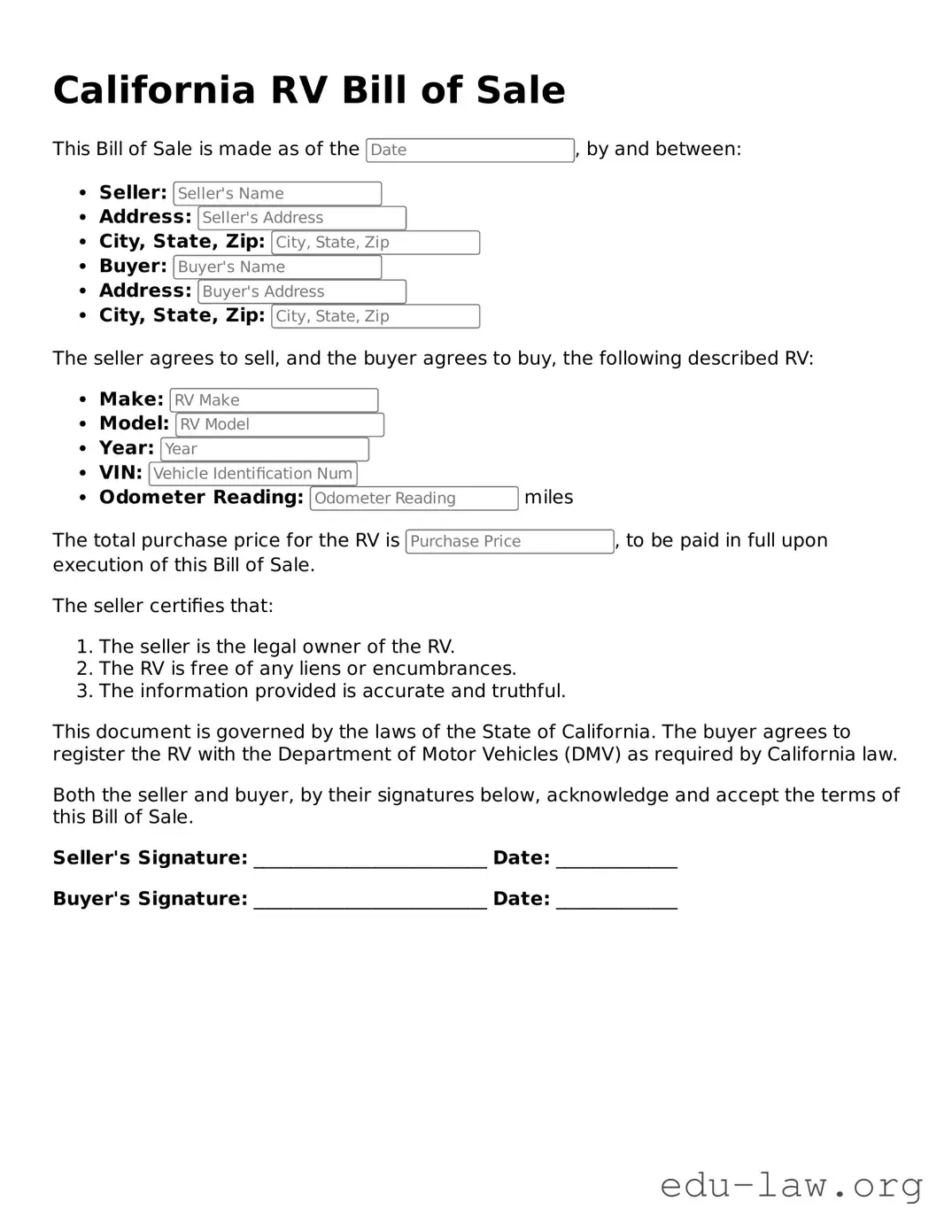What is a California RV Bill of Sale?
The California RV Bill of Sale is a legal document that records the transfer of ownership of a recreational vehicle (RV) from one party to another. This form serves as proof of the transaction and contains important details about the RV, including make, model, identification number, and the sale price. It ensures that both the buyer and seller have clear records of the transaction.
Do I need to have a Bill of Sale when buying an RV in California?
What information is required on the RV Bill of Sale?
The RV Bill of Sale must include specific information to be effective. Essential details include the buyer's and seller's names and addresses, a comprehensive description of the RV—including make, model, year, color, and vehicle identification number (VIN)—as well as the sale price and any applicable taxes. Additionally, both parties should sign and date the form to validate the transaction.
Can I create my own RV Bill of Sale?
Yes, you can create your own RV Bill of Sale, provided it includes all the required information. Many templates are available online to assist you. However, ensuring that the document is clear, thorough, and accurately reflects the details of the transaction is crucial, as this will help prevent potential issues later on.
Is a notary required for a Bill of Sale in California?
A notary is not required for a Bill of Sale for an RV in California. However, having the document notarized can add an extra layer of security, especially for larger transactions. Notarization can confirm the identities of the parties involved and affirm that both have signed the document willingly.
How does the Bill of Sale affect registration of the RV?
The RV Bill of Sale is a significant part of the registration process. When transferring ownership, the buyer will need this document to register the RV in their name. The California Department of Motor Vehicles (DMV) requires a completed Bill of Sale along with an application for title and registration to finalize the transfer.
What if there are liens or loans against the RV?
It is vital to ensure that any liens or loans against the RV are settled before the sale. The seller should provide clear evidence that any outstanding debts have been resolved. Failure to address liens can lead to complications for the buyer, as they could inherit financial obligations tied to the vehicle.
Where can I obtain a California RV Bill of Sale form?
A California RV Bill of Sale form can be obtained from various sources. You can find templates online, including forms available through the California DMV website. Additionally, local auto registration offices might provide printed versions. Make sure to use a reputable source to ensure the document meets legal requirements.
What should I do if I lose my RV Bill of Sale?
If you lose your RV Bill of Sale, it is advisable to construct a new one. Both parties—the buyer and the seller—should work together to recreate the document with all accurate information. Consider adding a note indicating it is a replacement for the lost document and have it signed again to verify the transaction.
